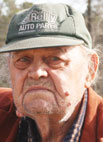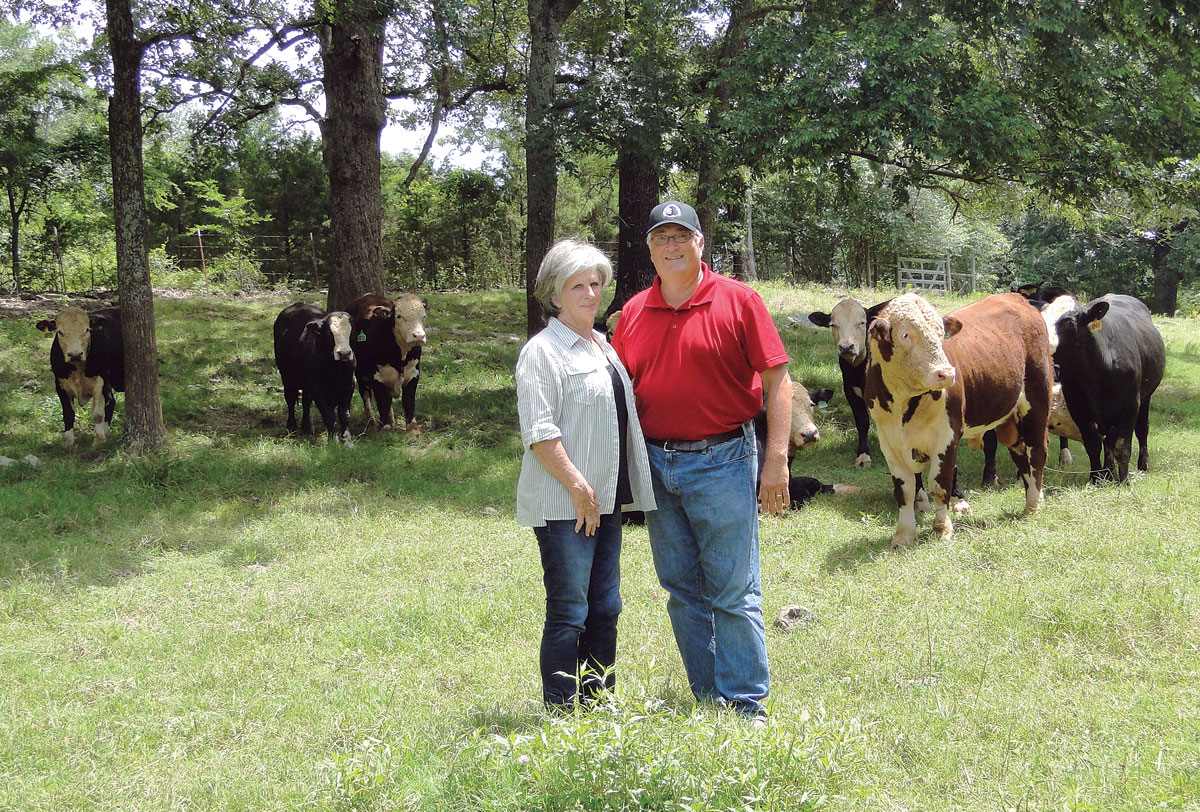
Arnold Ahrens and his wife Bernice farmed in Fredericksburg, Texas during the mid 1940’s during an extended drought. Some acquaintances that were from the same area of Texas had moved over to Arkansas, and when they came back to visit, they were talking about how grassy it was here. Liking the sound of grass aplenty, Arnold decided to look around at some land in Arkansas. Not long after, he and Bernice settled down around the Sands Springs area, in Lamar, Ark. In 1949, Arnold hired a truck to bring in about 100 head of Angora goats from Texas, along with some sheep and cattle he had. It was the beginning of a long, rich Arkansas farming story for Arnold and Bernice. Through the years they have acquired close to 1,000 acres between Clover Creek all the way to Big Piney.
They called their place Sands Springs Farm. He said that the reason they called it Sands Springs is because of a spring that runs back behind the place, and where the water comes out of the ground it pushes very white sand out, and the water is very cold. At the time of their arrival there was no electricity, so the folks built a trough about 5 or 6-inches deep, with an outlet at the end which let the cold water run through it to keep their milk, eggs and meat cold.
Arnold sheared his Angoras twice a year; he said that there was a six and a 12-month clip, just depending on what the farmer needed at the time.
"We would put the 12-month fleeces in an eight foot sack," he said, "I put a few fleeces in and then someone would climb up and jump into the bag and jump up and down to pack the fleeces good and tight. You can put about 50 mohair fleeces in a bag, but you had to leave enough room to put two ears at the top of the bag and a single ear on the bottom of the sack to make it manageable. Sometimes you do a six month shear but you only sack those fleeces, you don’t pack them." Arnold had the choice of selling on consignment, or sometimes he would haul the wool down to Texas when he visited family, charging a little extra for gas.
When Arnold was younger, and before they had electricity, he sheared with regular, hand shears. "I could shear about 100 a day," he said. "Some people tied the goats, but I didn’t. I had a way of holding them and that’s how I sheared. I used to go up to Missouri to sheer for three weeks every year."
As with any sheep and goat producer, Arnold admitted to his share of problems. "With it as wet as it has been, parasites are pretty bad this year, but the worst problem we have is coyotes. We added the Great Pyrenees dogs, and I’ll tell you if it wasn’t for those guard dogs, we wouldn’t be in the goat business today that’s for sure," he said.
Arnold had a much-diversified business at one time, in the 1960’s he had broilers, hogs, sheep and cattle, and also timber. He raised Angora sheep for about 50 years, and then in 1990's, he went to a Boer meat goat.
"They make the best nannies," he said. "I still have a little Angora in some of my stock; you can see the long wool on some of them still today. I have 120 head of goats today but some of those are my son Paul’s. They’re two separate herds, however they all run together in the same pasture."
When asked why he's been in the farming business so long, Arnold replied he liked being his own boss and getting up in the morning knowing what he needed to do for that day. "If I had to do it all over again I would still be a farmer."







